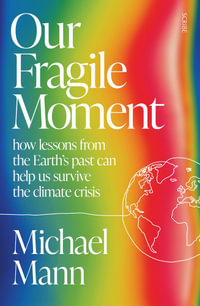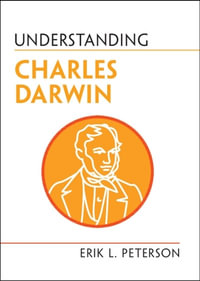
At a Glance
Hardcover
496 Pages
496 Pages
Dimensions(cm)
29.79 x 20.83 x 3.2
29.79 x 20.83 x 3.2
Hardcover
Limited Stock Available
RRP $236.00
$139.25
41%OFF
In Stock and Aims to ship in 1-2 business days
The History and Practice of Ancient Astronomy combines new scholarship with hands-on science to bring readers into direct contact with the work of ancient astronomers. While tracing ideas from ancient Babylon to sixteenth-century Europe, the book places its greatest emphasis on the Greek period, when astronomers developed the geometric and philosophical ideas that have determined the subsequent character of Western astronomy. The author approaches this history through the concrete details of ancient astronomical practice. Carefully organized and generously illustrated, the book can teach readers how to do real astronomy using the methods of ancient astronomers. For example, readers will learn to predict the next retrograde motion of Jupiter using either the arithmetical methods of the Babylonians or the geometric methods of Ptolemy. They will learn how to use an astrolabe and how to design sundials using Greek and Roman techniques. The book also contains supplementary exercises
and patterns for making some working astronomical instruments, including an astrolabe and an equatorium. More than a presentation of astronomical methods, the book provides a critical look at the evidence used to reconstruct ancient astronomy. It includes extensive excerpts from ancient texts, meticulous documentation, and lively discussions of the role of astronomy in the various cultures. Accessible to a wide audience, this book will appeal to anyone interested in how our understanding of our place in the universe has changed and developed, from ancient times through the Renaissance.
and patterns for making some working astronomical instruments, including an astrolabe and an equatorium. More than a presentation of astronomical methods, the book provides a critical look at the evidence used to reconstruct ancient astronomy. It includes extensive excerpts from ancient texts, meticulous documentation, and lively discussions of the role of astronomy in the various cultures. Accessible to a wide audience, this book will appeal to anyone interested in how our understanding of our place in the universe has changed and developed, from ancient times through the Renaissance.
Industry Reviews
"The History and Practice of Ancient Astronomy is one of the most exciting and original books ever written on ancient, as well as medieval and Renaissance, astronomy, indeed, on the history of science. Here, for the first time, the reader can learn not only about ancient astronomy, but how to do ancient astronomy. The breadth of coverage is encyclopedic, from the Babylonians and Greeks, Ptolemy in particular, through Arabic astonomers of the
middle ages, to Copernicus and Kepler. James Evans writes with an understanding and clarity that guides the reader through two thousand years of astronomy so that it is, as it were, brought back to life and can be
understood as thoroughly as modern science. This is an ideal way to write the history of science and to learn the history of science." --N.M. Swerdlow, Department of Astronomy and Astrophysics, University of Chicago
"Jim Evans combines a keen historical sense with a tinkerer's ingenuity and a gifted teacher's enthusiasm. His perceptive physical insights illuminate the intricacies of the early planetary theories. What I find particularly marvelous is the accuracy of his presentation (something remarkably hard to come by)." --Owen Gingerich, Professor of Astronomy and History of Science, Harvard-Smithsonian Center for Astrophysics
"It is a beautifully designed book, comprising 475 8-by-11 inch pages with clearly drawn illustrations . . . Based on twenty years of teaching his students not just ideas, but the actual nitty-gritty of historic models, Jim has masterfully explicated a tremendous range of historical astronomy, stretching from the Babylonians to Kepler. The focus is on the Greeks and Ptolemy, but much else is also covered. In each case he explains the astronomy in a modern sense
and then carefully shows what the ancient astronomers actually did. Relying on tables and graphical methods more than geometry and trigonometry, he gives examples and provides exercises that allow the
reader to enter worlds of the past. In addition, patterns and instructions are given so that one can construct and use cardboard versions of an astrolabe and of Ptolemaic slats. . . . Rarely does one see such a combination of usefulness, elegance, accuracy, and scholarship."--HAD News
"There are many 'history of astronomy' books, but none that I've seen attempt to do what James Evans does--which is to show how astronomical observations and calculations were done in ancient and medieval times. His massive book of almost 500 oversized pages is heavily illustrated with hundreds of black-and-white diagrams showing how astronomers long ago made their computations. . . . This book tells not only the what, but also the how. . . .
This book . . . provides an enormous amount of information on how astronomers through the millennia made their observations and calculations and on how they were influenced by each other and extended the work of their
predecessors. None worked in a vacuum, and Evans traces how ideas flowed through the centuries. . . . We all talk about ancient astronomy in our planetarium shows. This heavy book will show the dedicated student how to actually do ancient astronomy. It is wonderful . . . There is no other like it."--Planetarian
"Evans offers one of the most comprehensive books on ancient astronomy. The title is appropriate, for it encompasses astronomy from ancient Babylonian observations through the zenith of Greek science during the eight centuries beginning about 600 BCE, through the Middle Ages in Europe and the Islamic lands of the Middle East, to Copernicus and Kepler. This Western tradition centers on the observable sky and its measure. . . . [T]he book can be used as a text
for hands-on work in such areas as navigation and surveying, as well as in studying the historical development of the field. In its devotion to detail, it has few equals. Though limited to pretelescopic
astronomy, it has much for the present-day astronomy on constellations, due to the richness and sophistication of the astronomy of these periods. As treatise, handbook, and source, it is unexcelled. Recommended for all libraries."--Choice
"Evans . . . shows with clarity and skill how the tradition passed down the years through several translations and commentaries in Greek, Arabic and Latin, before finally reaching the culminating achievements of Copernicus, Tycho Brahe and Johannes Kepler. These Renaissance astronomers followed in Ptolemy's footsteps until Kepler finally abandoned the entire edifice of the geocentric cosmology . . . I highly recommend this book to anyone who would like to know
more about the fascinating history of the intellectual struggle to bring sense to the celestial sphere and the complicated motions of the planets. The printing and binding are of high standard, while
the index is both useful and detailed. There are also numerous figures and tables that enrich the clarity of the explanations. . . . If you would like to know more about the technical side of ancient astronomy, this book is for you . . . Certainly every university library should have a copy on its shelves."--Physics World
"[This book] surveys two thousand years of astronomy, from the Babylonian and Greek periods through the Middle Ages and the Renaissance. General readers, classicists, and astronomers will find this book accessible, informative, and, above all, illustrative of the tools, methods and uses to which the practice of astronomy was applied during these periods. Organized in a textbook-like manner of historical introduction followed by application and example, the book
challenges readers on a practical level by encouraging the construction and use of several mechanical models; the astrolabe, sundial, and Ptolemaic slats, from patterns provided by the author. . . .
[The book] is highly recommended for upper-level undergraduates in the areas of astronomy, history of science and classics. Other readers may find Evan's [sic] book difficult reading at times but will look far and wide before finding a basic treatment of this subject so clearly written and comprehensive in scope."--E-STREAMS
"While tracing ideas from ancient Babylon to Renaissance Europe, Evans emphasizes the details of astronomical practice. He discusses the evidence used to reconstruct ancient astronomy, and shows readers how they can do astronomy using ancient methods."--Science
"[H]istorians all too easily forget how much of relevance can be learned from surviving artefacts. This is especially true of the history of Antiquity . . . Thus the highly sophisticated gearing mechanism found in the sea in 1900 . . . has no counterpart in the written record, and no historian would have believed such a mechanism possible in Antiquity . . . The problem is that we are trained to read books, but artefacts are less easy for us to comprehend. As
far as ancient astronomy is concerned, the problem has now been solved by this handsome and quite admirable volume. The author . . . deals in successive chapters with the birth of astronomy; the
celestial sphere; applications of spherics; calendars and time reckoning; solar theory; the fixed stars; and planetary theory. A most unusual but welcome feature is the constant demand from the author that the reader demonstrate his mastery of the explanation by tackling exercises . . ."--Meteoritics & Planetary Science
"James Evans's book is a large-scale detailed survey of practically all facets of Mesopotamian and Greco-Roman astronomy, both mathematical and nonmathematical, from the second millennium B.C. to the second century A.D. Evans's conception of astronomy is not just an intellectual pasttime but very much an activity, and one that the reader is continually invited to share. One learns how to convert dates between ancient calendars, how to compile a Greek-style
weather calendar, how to make a sundial, how to use an astrolabe, how to calculate planetary positions in both the Babylonian and Ptolemy's manner. Trying these things out for oneself is often the most
effective way of understanding the principles, and one also gains a much more accurate general impression of what this astronomy was about than from conventional presentations that focus almost exclusively on the evolution of celestial mechanics." - American Journal of Physics, Vol. 68, No. 3, March 2000
"The History and Practice of Ancient Astronomy is one of the most exciting and original books ever written on ancient, as well as medieval and Renaissance, astronomy, indeed, on the history of science. Here, for the first time, the reader can learn not only about ancient astronomy, but how to do ancient astronomy. The breadth of coverage is encyclopedic, from the Babylonians and Greeks, Ptolemy in particular, through Arabic astonomers of the
middle ages, to Copernicus and Kepler. James Evans writes with an understanding and clarity that guides the reader through two thousand years of astronomy so that it is, as it were, brought back to life and can be
understood as thoroughly as modern science. This is an ideal way to write the history of science and to learn the history of science." --N.M. Swerdlow, Department of Astronomy and Astrophysics, University of Chicago
"Jim Evans combines a keen historical sense with a tinkerer's ingenuity and a gifted teacher's enthusiasm. His perceptive physical insights illuminate the intricacies of the early planetary theories. What I find particularly marvelous is the accuracy of his presentation (something remarkably hard to come by)." --Owen Gingerich, Professor of Astronomy and History of Science, Harvard-Smithsonian Center for Astrophysics
"It is a beautifully designed book, comprising 475 8-by-11 inch pages with clearly drawn illustrations . . . Based on twenty years of teaching his students not just ideas, but the actual nitty-gritty of historic models, Jim has masterfully explicated a tremendous range of historical astronomy, stretching from the Babylonians to Kepler. The focus is on the Greeks and Ptolemy, but much else is also covered. In each case he explains the astronomy in a modern sense
and then carefully shows what the ancient astronomers actually did. Relying on tables and graphical methods more than geometry and trigonometry, he gives examples and provides exercises that allow the
reader to enter worlds of the past. In addition, patterns and instructions are given so that one can construct and use cardboard versions of an astrolabe and of Ptolemaic slats. . . . Rarely does one see such a combination of usefulness, elegance, accuracy, and scholarship."--HAD News
"There are many 'history of astronomy' books, but none that I've seen attempt to do what James Evans does--which is to show how astronomical observations and calculations were done in ancient and medieval times. His massive book of almost 500 oversized pages is heavily illustrated with hundreds of black-and-white diagrams showing how astronomers long ago made their computations. . . . This book tells not only the what, but also the how. . . .
This book . . . provides an enormous amount of information on how astronomers through the millennia made their observations and calculations and on how they were influenced by each other and extended the work of their
predecessors. None worked in a vacuum, and Evans traces how ideas flowed through the centuries. . . . We all talk about ancient astronomy in our planetarium shows. This heavy book will show the dedicated student how to actually do ancient astronomy. It is wonderful . . . There is no other like it."--Planetarian
"Evans offers one of the most comprehensive books on ancient astronomy. The title is appropriate, for it encompasses astronomy from ancient Babylonian observations through the zenith of Greek science during the eight centuries beginning about 600 BCE, through the Middle Ages in Europe and the Islamic lands of the Middle East, to Copernicus and Kepler. This Western tradition centers on the observable sky and its measure. . . . [T]he book can be used as a text
for hands-on work in such areas as navigation and surveying, as well as in studying the historical development of the field. In its devotion to detail, it has few equals. Though limited to pretelescopic
astronomy, it has much for the present-day astronomy on constellations, due to the richness and sophistication of the astronomy of these periods. As treatise, handbook, and source, it is unexcelled. Recommended for all libraries."--Choice
"Evans . . . shows with clarity and skill how the tradition passed down the years through several translations and commentaries in Greek, Arabic and Latin, before finally reaching the culminating achievements of Copernicus, Tycho Brahe and Johannes Kepler. These Renaissance astronomers followed in Ptolemy's footsteps until Kepler finally abandoned the entire edifice of the geocentric cosmology . . . I highly recommend this book to anyone who would like to know
more about the fascinating history of the intellectual struggle to bring sense to the celestial sphere and the complicated motions of the planets. The printing and binding are of high standard, while
the index is both useful and detailed. There are also numerous figures and tables that enrich the clarity of the explanations. . . . If you would like to know more about the technical side of ancient astronomy, this book is for you . . . Certainly every university library should have a copy on its shelves."--Physics World
"[This book] surveys two thousand years of astronomy, from the Babylonian and Greek periods through the Middle Ages and the Renaissance. General readers, classicists, and astronomers will find this book accessible, informative, and, above all, illustrative of the tools, methods and uses to which the practice of astronomy was applied during these periods. Organized in a textbook-like manner of historical introduction followed by application and example, the book
challenges readers on a practical level by encouraging the construction and use of several mechanical models; the astrolabe, sundial, and Ptolemaic slats, from patterns provided by the author. . . .
[The book] is highly recommended for upper-level undergraduates in the areas of astronomy, history of science and classics. Other readers may find Evan's [sic] book difficult reading at times but will look far and wide before finding a basic treatment of this subject so clearly written and comprehensive in scope."--E-STREAMS
"While tracing ideas from ancient Babylon to Renaissance Europe, Evans emphasizes the details of astronomical practice. He discusses the evidence used to reconstruct ancient astronomy, and shows readers how they can do astronomy using ancient methods."--Science
"[H]istorians all too easily forget how much of relevance can be learned from surviving artefacts. This is especially true of the history of Antiquity . . . Thus the highly sophisticated gearing mechanism found in the sea in 1900 . . . has no counterpart in the written record, and no historian would have believed such a mechanism possible in Antiquity . . . The problem is that we are trained to read books, but artefacts are less easy for us to comprehend. As
far as ancient astronomy is concerned, the problem has now been solved by this handsome and quite admirable volume. The author . . . deals in successive chapters with the birth of astronomy; the
celestial sphere; applications of spherics; calendars and time reckoning; solar theory; the fixed stars; and planetary theory. A most unusual but welcome feature is the constant demand from the author that the reader demonstrate his mastery of the explanation by tackling exercises . . ."--Meteoritics & Planetary Science
"James Evans's book is a large-scale detailed survey of practically all facets of Mesopotamian and Greco-Roman astronomy, both mathematical and nonmathematical, from the second millennium B.C. to the second century A.D. Evans's conception of astronomy is not just an intellectual pasttime but very much an activity, and one that the reader is continually invited to share. One learns how to convert dates between ancient calendars, how to compile a Greek-style
weather calendar, how to make a sundial, how to use an astrolabe, how to calculate planetary positions in both the Babylonian and Ptolemy's manner. Trying these things out for oneself is often the most
effective way of understanding the principles, and one also gains a much more accurate general impression of what this astronomy was about than from conventional presentations that focus almost exclusively on the evolution of celestial mechanics." - American Journal of Physics, Vol. 68, No. 3, March 2000
"The book is copiously illustrated with helpful geometric figures, and supplemented her and there with a generous touch of simple mathematics. . .Students who learn the elements of spherical astronomy from this book will certainly have a firm grasp of what is involved. . . .One of the beauties of this book is that it can be browsed non-consecutively. In fact, some sections could easily be used as self-contained course material -- the chapter on the calendar,
for instance, would provide a better survey for budding historians with chronological tendencies than much of recent semi-popular literature on that subject."--Nature
"Most people don't require a detailed understanding of the observational and mathematical techniques that provided the foundation for positional astronomy and timekeeping in antiquity, but James Evans provides full immersion into the astronomy of antiquity in a large-formatted, fully illustrated, and comprehensively developed exposition of the details of an enterprise that now allows us to send instruments to other planets in lieu of epicycling them on solid
earth. This is, in fact, a hands-on treatment of archaic astronomy. Historians, of course, are lucky to have this unique source. Its lasting value commends it to institutional libraries in science,
history of science, astronomy, history of astronomy, and intellectual history."--Griffith Observer
1: The birth of astronomy
2: The celestial sphere
3: Some applications of spherics
4: Calendars and time reckoning
5: Solar theory
6: The fixed stars
7: Planetary theory
Appendix: patterns for models
Notes
Bibliography
ISBN: 9780195095395
ISBN-10: 0195095391
Published: 1st October 1998
Format: Hardcover
Language: English
Number of Pages: 496
Audience: Professional and Scholarly
Publisher: OXFORD UNIV PR
Country of Publication: GB
Dimensions (cm): 29.79 x 20.83 x 3.2
Weight (kg): 1.38
Shipping
| Standard Shipping | Express Shipping | |
|---|---|---|
| Metro postcodes: | $9.99 | $14.95 |
| Regional postcodes: | $9.99 | $14.95 |
| Rural postcodes: | $9.99 | $14.95 |
How to return your order
At Booktopia, we offer hassle-free returns in accordance with our returns policy. If you wish to return an item, please get in touch with Booktopia Customer Care.
Additional postage charges may be applicable.
Defective items
If there is a problem with any of the items received for your order then the Booktopia Customer Care team is ready to assist you.
For more info please visit our Help Centre.
You Can Find This Book In

The Science Museum Stephen Hawking Genius at Work
Explore His Life, Mind and Science Through the Objects in His Study
Hardcover
RRP $42.99
$36.50
15%
OFF
OFF
This product is categorised by
- Non-FictionScienceAstronomy, Space & Time
- Non-FictionMedicineMedicine in GeneralHistory of Medicine
- Non-FictionMathematicsHistory of Mathematics
- Non-FictionEngineering & TechnologyTechnology in GeneralHistory of Engineering & Technology
- Non-FictionScienceScience in GeneralHistory of Science
- Non-FictionHistoryGeneral & World History
- Non-FictionHistoryEarliest Times to Present DayAncient History to the Year 500
- BargainsNon-Fiction BargainsMedicine Bargains
- BargainsNon-Fiction BargainsScience Bargains
- BargainsAcademia & Knowledge Bargains
- BargainsNon-Fiction BargainsHistory Bargains






















